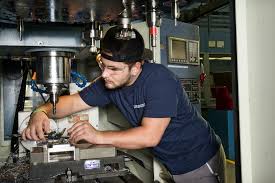A Smart approach to calibration – Why we should forget calendar-based calibrations
If the current practice of calendar-based calibration has eventually convinced us that it is a good thing, a brief look at its historical context leads us to a consideration that sheds a totally different light on this issue. First, we will clarify that legal metrology set this practice in place to grant fairness in commercial transactions for both customers and suppliers.
There is a well-known principle in the world of commerce called risk-sharing. An example of it is if my roast-beef is bigger than the scale says, I gain if I am the customer; if the roastbeef is smaller than the scale indicates, then the supplier (the butcher) is the winner of the day. In the long-term, or in other words, on the average, nobody will really gain because the roast may be bigger one day and smaller another day. I cannot complain. In this framework, periodic calendar-based calibration (or verification) of the scale is an indisputably powerful tool. It is a simple fact that the scale either conforms to regulations, meaning that the butcher is entitled to use it as it is, or it has drifted to the point where it does not comply with regulations and must be calibrated. To avoid sanctions, it is enough to simply comply with the required calibration intervals. If the instrument is no longer compliant, no need to make impact studies; adjust it and forget everything else!
However, by replicating this model, no matter how appropriate it may be within its original context, industry has sidestepped the essential issue. What matters here is not fairness to customers, but guaranteeing the conformity of the product or service provided. In the event of a defect, it is the customer who suffers the consequences, and the consequences can be quite serious indeed. Just think of a critical airplane engine component that fails, and if you imagine yourself inside that airplane, the problem will immediately become crystal clear.
This example gives perfect evidence that the periodicity of verifications and calibrations cannot be set in an arbitrary way: measurements must be sufficiently reliable every time they are performed to ensure that everyday decisions made based on measurements’ results are the right ones. To ensure this, metrology and metrologists must abandon this scheduling approach (somehow now irrelevant), which is based only on the blind respect of expiration dates set without trying to answer the only question that really matters and worries us. Metrology and metrologists must become smart enough to feel at ease to believe that calendar- based calibrations provide the right answer to the only question of interest to smart metrologists: “What are the risks associated with making a decision?” Nowadays, customers, suppliers, and auditors seem to agree upon a practice of scheduled calibration, which is indeed very easy to challenge and believing in it does have a cost!
While it is true that measuring devices must be calibrated when we buy them, since this is essential to ensure that they operate correctly (possibly before paying them, to avoid legal disputes), industrial practice requires on a daily basis that the metrological performance of the measuring devices is assured to be within the required specifications.
This short article is not aimed at describing the method that allows acceptable performance limits to be defined. Let us only remember here that they should be established not only on the basis of the uncertainty budget (by determining the impact of the instrument with respect to other uncertainty contributions) but also consider the related acceptable customer and supplier risks, according to the ISO/IEC Guide 98-4:2012 – Uncertainty of Measurement – Part 4: Role of measurement uncertainty in conformity assessment.
We are aimed, here, to alert metrologists, auditors and industrial professionals that, although arbitrary fixed-interval verifications have been accepted as a good practice for a long time, this is based more on an established practice (but how often habits are good?) rather than on a verified performance (a key factor for the evolution of any company).
Even if methods exist to define optimal periodicity, i.e., taking into account the past history and the relative weight of the device in the considered measurement context, its present state, and its tolerable limits, none of them allow us to guess the date and time of events that might have the potential to compromise the instrument’s characteristics. Yet, an accident could occur at any moment. For example, an accident that occurs when unpacking an instrument that has been returned from calibration might have serious consequences that invalidate the nice “Calibration Certificate” that announces that the 12 IEEE Instrumentation & Measurement Magazine April 2017 instrument is compliant, and the metrologist might not even realize it. Shall we wait until the next calibration is performed, one year later, to realize that the instrument is not measuring properly? Frankly speaking, I do not want to be in that airplane.
There is no doubt that we have to search for a more effective solution somewhere else. Legal metrology provides good solutions in its own domain but unfortunately not in the industrial domain! Time has come for proposing a new model, and here is where the more modern smart metrology model begins. How is it possible to continuously ensure that a measuring device is doing its job properly, detecting every anomaly in real time, as soon as possible: to act, and not react?
Systematic monitoring, albeit strongly recommended in current standards, is often neglected, probably because its outcome is not simple to understand, and especially for auditors (it does not show any accredited body logo, it lacks traceability, it does not refer to specific standards, etc.) It is also possible that the lack of support from the calibration labs (it is not difficult to understand why) does not help continuous monitoring to become common practice. Yet this is a satisfactory (if not the only) solution, that shows minimal or even no cost in detecting anomalies. It monitors in almost real time so that it becomes possible to act in a conditional way (I calibrate because I have elements suggesting to me that I had better do it) rather than an arbitrary way (I calibrate because of a scheduled calibration).
From the simple stone on a balance (or the measurement of a known part with a calliper) to an inter-instrument comparison, this solution finds its only limitation in our imagination. Rather than focusing on arbitrary dates, the metrologist (now Smart) concentrates his energy on his daily in-house capacity to detect an anomaly in the measuring devices. In addition, case studies demonstrate that industry is following this approach in the same way as Mr. Jourdain composed prose: without knowing it! (Molière’s Would-be Gentleman). Is there any metrologist who met an operator who brought him or her an instrument without waiting for the date shown on the label because he or she had doubts on the correctness of the returned values? From this perspective (and almost thirty years of ISO 9001 certification in certain cases), we can all ask ourselves how many times the detection of a true “device non-conformity” has been made in-house rather than during periodic calibration. It is true that the calibration folks (either in-house or external) do sometimes declare a device out-of-tolerance. However, how often does this declaration have a real impact on production, i.e., causing a recall of products sold or delivered?
I have no doubts that these answers will eventually persuade people of the usefulness of monitoring as opposed to arbitrary periodic calibration. At this stage of the explanation, I hope that everyone can see how scheduled calibration is a practice belonging to a different world (that of legal metrology) that fails to meet the real needs of industrial reality: mastering the risks associated with each decision, every time we make it.
Often auditors, who are not-experts in this field, evaluate the metrology service using the available information they have, that is, with the practices they meet in other companies. Therefore, time has come to act as Smart Metrologists, change this, and prove what metrology is about when it follows proper and logical reasoning! Of course, it will take time, but if we never start, we will never change anything. By acting in a smart way, Smart Metrologists are working for the future generations and I do believe that they will thank us for our efforts.
Jean-Michel Pou (jmpou@deltamu.com) is a self-taught person who is the founder of the French company Deltamu, active in the field of excellence metrology and well known for its educational activity and software development in the metrology field. He is also a member of the Metrology Committee of AFNOR, the President of the Cluster of Excellence Auvergne Efficience Industriel and Ambassador of the Association Alliance for the Future Industry in the French Region Auvergne Rhône-Alpes.
This article was published in the Instrumentation & Measurement magazine, vol. 20, no. 2, pp. 11-12, April 2017.

